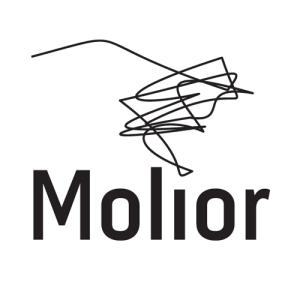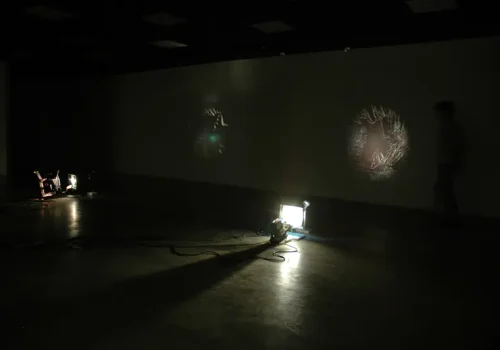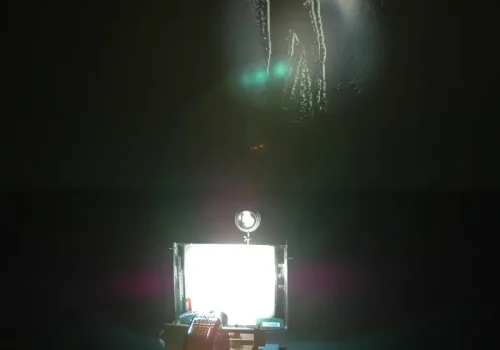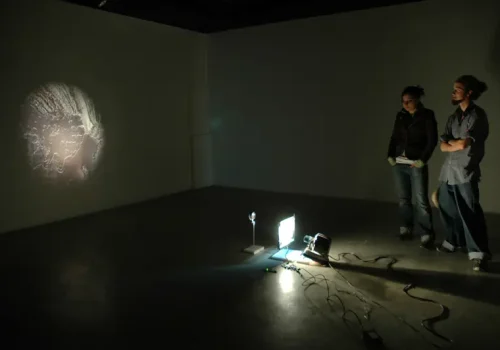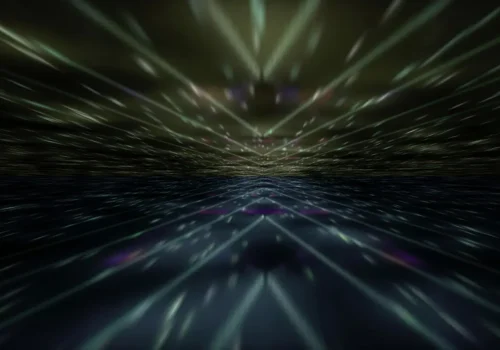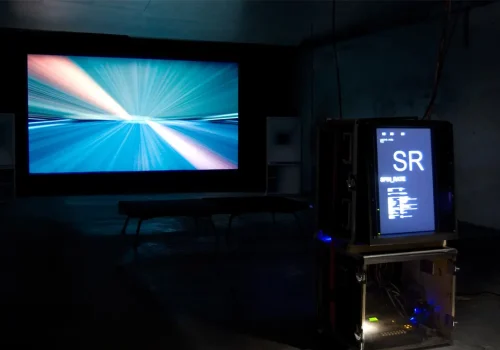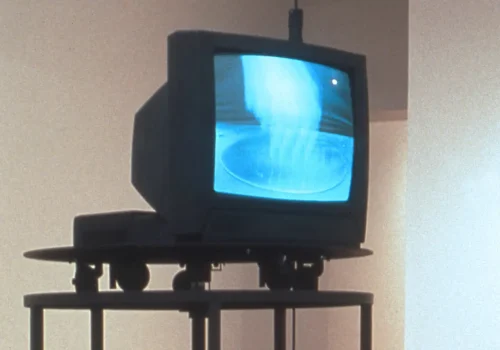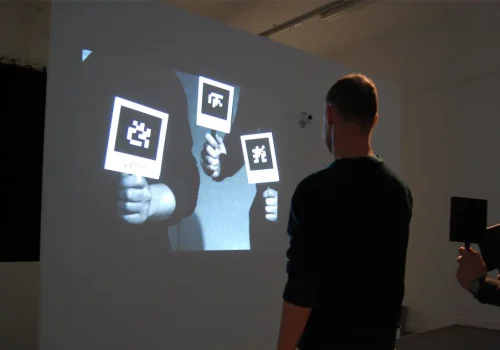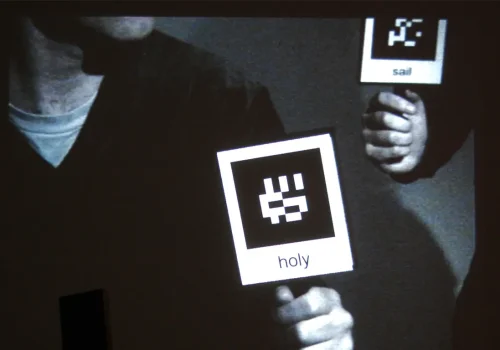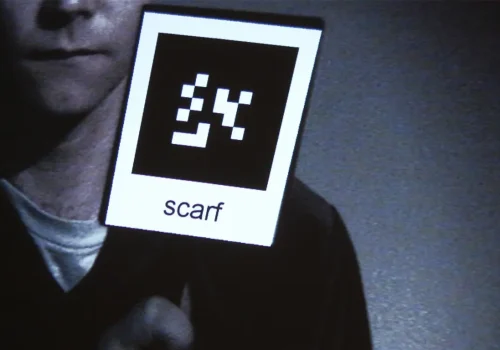Captatio oculi
Galerie Séquence, Chicoutimi
From April 28th to June 5th, 2011
Molior presents Captatio oculi curated by Sylvain Campeau at galerie Séquence in Chicoutimi from April 28th to June 5th, 2011. The exhibition gathers projects by Alexandre Castonguay, Jean-Pierre Aubé, Martin Boisseau and Sofian Audry.
The exhibition features installations using machines that both record and transform data. Spectators are invited to experience images and sounds resulting from their processes.
Digital Captures / Sylvain Campeau
We all lived the revolution. We know this without knowing it. Yet we no longer are what we were just recently. Nowadays we are all equipped with devices that we didn’t have just 10 or 20 years ago. Devices that we are increasingly entering into relationships with. In other words, by using them as a medium, we of course enter into relationships between one another, but in the process we also enter into a relationship with them. Whether it be about having friends on Facebook and Twitter or about looking for phone numbers and addresses on the computer rather that through the yellow pages, these tools are used to facilitate and even nourish the relationships we have with each other. But when we check our smartphone every 10 minutes to see who left us an email and when we spend more time looking at our GPS than the surrounding streets to find our way, there is no denying the strong pull of these devices and the firm grip their particular functionality has taken on us. And all these instruments, which we did not even have so long ago, have become essential for us.
Through and with these gadgets, we are confronted with a new way of grasping reality. This has not gone unnoticed by artists who have chosen to take up these new-fangled devices to investigate our relation to the real and the way in which these instruments proceed from the real. In fact, for these tools the real is a matter of data. Through them, reality can be reduced to a new dimension which makes it infinitely malleable, protean and multiform. This dimension is the pure and simple digital datum. By way of it, the real has been chewed to pieces, digested into data and regurgitated in various image, sound or other forms.
From hence on, it is no longer a matter of analogy, copy, representation, indexes or traces. One must now speak of capturing data, which is first digital, and then—though not always—visual and/or auditory. But it is, above all, a question of interface and capture.
Of interface because it is at this contact point between the real and the data recording machine, and then between it and the human being that the experience of the real is summed up. It is on these interconnected surfaces that what is to become the artwork is founded. Of capture, because it is all about capturing and of seizing the world. Of course segments of both the auditory and visual world must first be, in a way, be “entered” into the crucible of the computer’s virtual transformations. A computer that is in fact an organizer of information arranged according to the formatting and functions dictated by software.
In a previous text, I already claimed that the revolution ushered in by digital photography was not as important as previously presumed(1). Though it may be true that all reflection based on a logic of the index, capture and reproduction of what was once there, no longer corresponds to what the digital does, it nevertheless remains that a capture continues to be the basis of most of contemporary photographic works, almost all of which, more or less, make use of the digital.
It is consequently not hard to understand why Alexandre Castonguay’s Éléments appealed to me. This work presents a theatralization of machines which evoke photography and its original model: projection via camera obscura. But this is combined with transformation modes which are for their part specifically digital. Here luminous emanations filtered through a lens appear alongside liquid crystal films functioning like a slide projection. It is also important to highlight the reference to video inherent in the image capture of viewers and their real time reproduction.
Jean-Pierre Aubé’s Titan et au-delà de l’infini is spectacular. But the images that he shows are not reproductions of anything real. They result from a 2 minute long radio message sent by a drone from Titan, a moon orbiting Saturn. This sound file contains telemetric data which the artist organized in graphic form through a software, and then compiled thanks to an algorithm. The kinetic image born of this process is here constituted of data, of codified information. If the capture remains the fundamental operation on which everything depends, its content is of little importance since it is entirely different from what it was initially intended for.
Such a transformed capture effect is also present in both Sofian Audry’s and Martin Boisseau’s works. With the former it is in reference to an image of the viewer, who holds a card, which is taken in real time and reproduced via a projection. But, the word on the viewer’s card is not the same as the one she or he sees in the image, since another one, suggested by the first, has been substituted for it. This is a capture distorted by digital information modeled to disturb the truthfulness of the real time projection. The system is subject to semantic shifts, extensions and approximate metonymies. With Martin Boisseau, the capture is (almost) strictly respected. A mechanism, which he used in a prior work, is reapplied to create a rotating projection. The projected image is that of the very same gallery where it is presented. A redundancy effect, perhaps involving some minor modifications. Moreover, one can hear a voice which describes the shown site, in addition to making some remarks and reflecting on the meaning of this representation, on this substitution of art over the real.
In all these works, the end result reveals nothing of the inner workings, of the fundamental relations governing the show before us. Photography, video, digital data, transcoding and alteration of the original information consists of a spectacular display, a pleasure for the eye, yet the depths of these performances are not so much effective presences as they are digital captures…
1. Sylvain Campeau, « Captation », L’imprimé numérique en art contemporain, Trois-Rivières, Éditions d’art Le Sabord, Collection Essai, 2007, p. 29-34.
Sylvain Campeau
Sylvain Campeau holds a Ph. D. in French Literature. He has collaborated to several Canadian and European magazines (ETC, Ciel Variable, Parachute, PhotoVision, Ligeia and Papel Alpha). He has also curated some thirty exhibitions, presented in Canada and abroad, including the group exhibition Flambant vu. Corps, spectacles, held in September 2001 at Galerie Séquence in Saguenay and in September 2003 at Gallery 44 in Toronto, in conjunction with the Toronto International Media Art Biennal tranz “-“ tech, and Le cadre, la scène, le site, a survey of Québec photography over the past twenty years (in collaboration with Mona Hakim) circulating across Mexico. Also a poet, he has published five collections of poems, two essays on photography (Chambres obscures. Photographie et installation, Trois, 1995; OIKOS / Habitacles, SBC Gallery, 2008) and an anthology of poetry from Quebec.
Artists & works
Alexandre Castonguay
(in collaboration with Mathieu Bouchard)
Éléments
2004-2005
Interactive installation
Description of the work
Eléments displays the set-up that is commonly associated with media arts: in a darkened room, projectors project the recorded and transformed image of viewers on the walls. Numbering 4, these elements correspond to programming motifs often used in interactive installations: images accumulated in real time, a replaying of the recorded video sequences, a convolution effect which accompanies the outlines of viewers’ gestures, and an arbitrary colouring effect of the image on which the viewer can intervene. Circular like a camera obscura, pixelated like an 8-bit game, the projected images belong both to the analogue and digital regime and situate the work in direct relation to the viewer’s body. Just as the projection light turns off, the lighting of the exhibition room is turned on. This paradoxical dramatic surprise introduces a distanciation effect (Verfremdungseffekt)—made possible by foregrounding an artifice of the work—which obliges one to reread the piece and its effects.
Éléments was created in collaboration with Mathieu Bouchard.
Biography
The works of Alexandre Castonguay utilize open source technologies and software. His interactive installations and photographs have been featured in solo shows at the Musée d’art contemporain de Montréal and Mexico’s Centro de la Imagen. He has taken part in group shows at the Los Angeles County Museum of Art, the Canadian Museum of Contemporary Photography, as well in Beijing, Madrid, Berlin and Graz. He teaches at the University of Ottawa and is a founding member of Artengine.
Jean-Pierre Aubé
Titan et au-delà de l’infini
2007
Video installation
Description of the work
On January 14, 2005, after a 7 year and 3 billion kilometre trip, the Huygens drone landed on Titan, a moon orbiting Saturn. This experiment carried out by the European Space Agency outlines a logbook of a never before visited region. To make this video the artist first programmed software to compile and organize the data of the Huygens probe’s voyage in graphic form. This software translates the various measurements taken by the 11 instruments aboard the Huygens into images. The title is a direct reference to the “Jupiter and Beyond the Infinite” scene in 2001: A Space Odyssey, also known as the “Stargate” sequence. Douglas Trumbull shot this scene. Trumbulll was a technical illustrator for the NASA at the time Kubrick hired him. He devised the slit-scan technique, originally a photographic effect, which consists of combining long exposure times with a moving camera to create the illusion of forward movement. The Hugyens data is thus arranged graphically, and then compiled through an algorithm. Parameters such as speed, altitude, and the density of Titan’s atmosphere are analyzed and translated by the artist’s virtual imaging software.
Biography
Artist and programmer, Jean-Pierre Aubé holds an MFA from Université du Québec à Montréal. His work has consistently used recuperative technology and data acquisition systems to question nature. Since 2000, he has worked on capturing the sounds of the aurora borealis through the use of very low frequency receivers. His VLF.Natural Radio project was presented as a performance installation and lecture. In 2004, he created Save the waves, an 20 000 watt octophonic sound system able to monitor electromagnetic perturbations in real time, as well as Nocturne, a piece for 8 led, 2 photocell and a lighthouse.
Martin Boisseau
Septième temps: latéral courbe (pour oeil seul)
2000-2002
Steel, engine, projector, gears
Description of the work
Septième temps: latéral courbe (pour oeil seul) Vestion deux: Séquence is comprised of a central tower (52’’ H X 32’’ Diam.) which serves to record and project video images. There is a rotating platform on the upper part of the tower. From this platform a video projector projects an image of the exhibition room on the said exhibition room walls. To this end a camera is placed on the rotating platform for the filming. Subsequently, the same tower and its rotating platform is used to project the previously recorded images. During the shooting, Martin Boisseau is in the room and gives a talk about questions pertaining to exhibition spaces, to presence, to images as substitutes, their function and uses, mise en abyme, and the limits of language. The tower is made out of steel painted in black and equipped with an independent lighting system.
Biography
Martin Boisseau holds a Ph.D. in Art Studies from Université du Québec à Montréal. Over the past fifteen years, Boisseau has developed an artistic practice that is both multi-disciplinary and interdisciplinary. His process varies between printmaking, drawing, photography, video and various sculptural elements (construction, mechanical structure). The common denominator in this seemingly diverse body of work is a willingness to question different forms of representation. Most of his works bring together various elements related to visual language. Issues pertaining to translation, equivalence, and transcription are at the heart of this artistic production. His work has been included in some fifty visual arts events (solo and group exhibitions, special events) and can be found in many public collections, including the Musée national des beaux-arts du Québec, the National Bank, the Bibliothèque nationale du Québec and the Musée d’art de Joliette. He is represented by Galerie Graff in Montréal.
Sofian Audry
Flag
2007
Interactive installation
Description of the work
Flag is an installation that explores the concepts of choice, perception and identity. The work seeks to create an intimate connection between the artist and the public through an interactive experience. The viewer is invited to choose among a set of symbols and to display them under the watch of an active screen. The environment reacts by proposing an immersive narration that alternately produces surprise, judgement and acceptation. The signs chosen by the viewer become so many small screens on which fragments of stories, characters and impressions appear. A model of cultural shock serves as the inspiration for their behaviours and sequencing. The interactive narration draws on a relational database of words. For each presentation of the project, a database will be built based on the artist’s preconceptions and memories in relation to the exhibition context.
Biography
Sofian Audry holds a bachelor’s degree in Computer Sciences and Mathematics and a master’s degree in Computer Science from the University of Montreal. Influenced by an education in information processing and an interest in language modelling, Sofian Audry works in a niche that mixes new technologies with the social and cognitive mechanisms of the human being. His works are built using complex algorithms and process data generated by ingenious interfaces. Since 2004, he developed various installations and web projects, both individually and collectively. He joined the artist-run centre Perte de Signal in 2005 and has just completed a master’s degree in Communication (UQAM, 2007). His work has been presented in Canada and Europe in many festivals and exhibitions.
